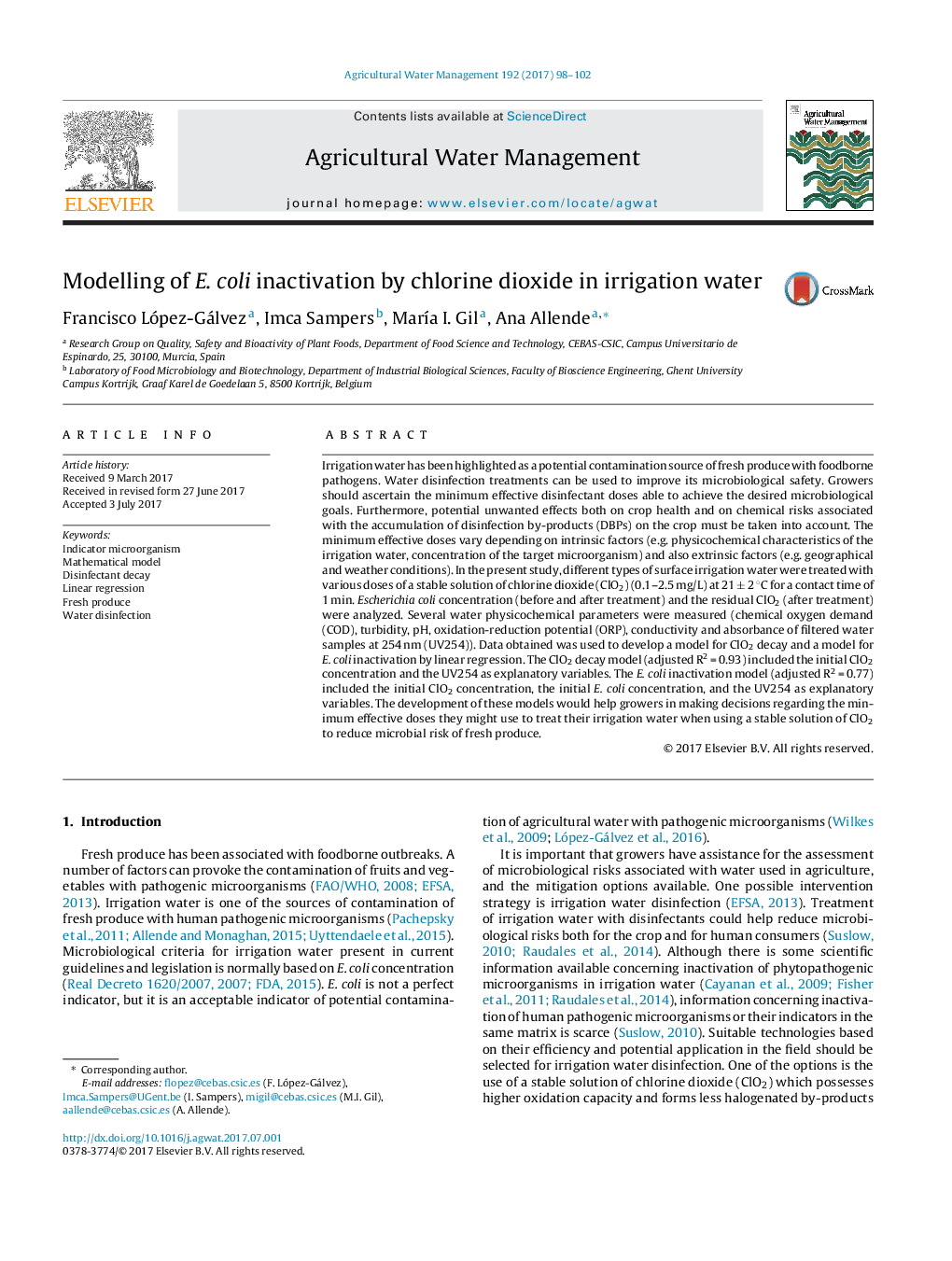| Article ID | Journal | Published Year | Pages | File Type |
|---|---|---|---|---|
| 5758420 | Agricultural Water Management | 2017 | 5 Pages |
Abstract
Irrigation water has been highlighted as a potential contamination source of fresh produce with foodborne pathogens. Water disinfection treatments can be used to improve its microbiological safety. Growers should ascertain the minimum effective disinfectant doses able to achieve the desired microbiological goals. Furthermore, potential unwanted effects both on crop health and on chemical risks associated with the accumulation of disinfection by-products (DBPs) on the crop must be taken into account. The minimum effective doses vary depending on intrinsic factors (e.g. physicochemical characteristics of the irrigation water, concentration of the target microorganism) and also extrinsic factors (e.g. geographical and weather conditions). In the present study, different types of surface irrigation water were treated with various doses of a stable solution of chlorine dioxide (ClO2) (0.1-2.5 mg/L) at 21 ± 2 °C for a contact time of 1 min. Escherichia coli concentration (before and after treatment) and the residual ClO2 (after treatment) were analyzed. Several water physicochemical parameters were measured (chemical oxygen demand (COD), turbidity, pH, oxidation-reduction potential (ORP), conductivity and absorbance of filtered water samples at 254 nm (UV254)). Data obtained was used to develop a model for ClO2 decay and a model for E. coli inactivation by linear regression. The ClO2 decay model (adjusted R2 = 0.93) included the initial ClO2 concentration and the UV254 as explanatory variables. The E. coli inactivation model (adjusted R2 = 0.77) included the initial ClO2 concentration, the initial E. coli concentration, and the UV254 as explanatory variables. The development of these models would help growers in making decisions regarding the minimum effective doses they might use to treat their irrigation water when using a stable solution of ClO2 to reduce microbial risk of fresh produce.
Related Topics
Life Sciences
Agricultural and Biological Sciences
Agronomy and Crop Science
Authors
Francisco López-Gálvez, Imca Sampers, MarÃa I. Gil, Ana Allende,
